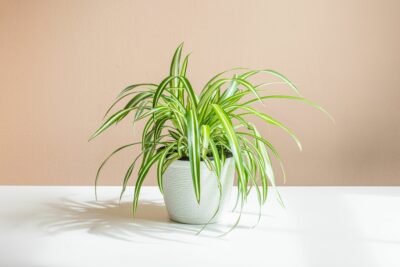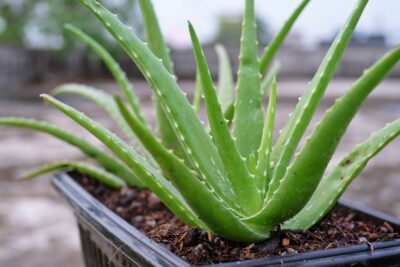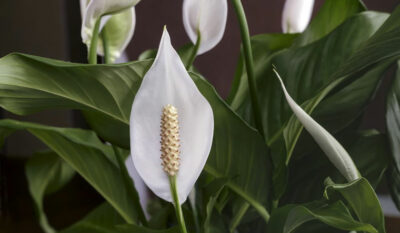Top Indoor Plants for Indian Homes: Low Light & Easy Care

Table of Contents
Looking to spruce up your home with some greenery? You’re in luck. India’s diverse flora means there’s an array of best indoor plants to choose from, each bringing a unique touch of nature into your living space. Whether you’re after the lush foliage of a fern or the sturdy charm of a Jade plant, there’s something for every corner of your home.
Selecting the perfect plant isn’t just about aesthetics, though. It’s about finding the right fit for your lifestyle. With busy schedules, you’ll be pleased to know that low maintenance options like bamboo and Snake plants are just a click away, ready to thrive with minimal fuss.
And the best part? You don’t even need to step outside to find them. A vast collection of indoor plants awaits you online, complete with all the details you need to make an informed choice. So, sit back, relax, and let the greenery come to you.
Snake Plant

If you’re searching for a hardy houseplant that brings both beauty and brawn to your home, look no further than the Snake Plant, also known as Sansevieria. Its sword-like foliage soars upwards with shades of green and accents of yellow and cream along the margins, a striking addition to any room.
The Snake Plant’s adaptability is unmatched, thriving in conditions other plants might struggle with. Whether in bright or low sunlight, it remains resilient, making it an ideal choice for spaces within your home that don’t receive much natural light.
Care and Maintenance
Despite its robust nature, the Snake Plant asks for very little in return. When it comes to soil, it’s not fussy, handling dry, poor soil conditions with ease. However, you’ll want to be cautious with watering. Overwatering is the kryptonite of this otherwise indestructible plant. In the winter months, a watering every couple of months is sufficient, always ensuring the soil is dry before adding more water.
The Snake Plant benefits from a nutrient boost during the growing season. A 10-15-10 fertilizer ratio works wonders, providing the nitrogen, phosphorus, and potassium necessary for stellar growth. Don’t forget those micronutrients – they’re crucial for optimal health.
Air Purifying Qualities
One of the most compelling reasons to choose a Snake Plant is its air purifying capabilities. Known as one of the world’s greatest air purifiers, it can help create a fresher, cleaner indoor atmosphere, making it a top pick for your home.
With this plant, you’ll enjoy not only aesthetic value but also functional benefits. Whether it’s placed in a corner that receives little light or amongst other plants that demand more attention, the Snake Plant will stand out with its minimal needs and striking visuals. Remember, the right care will ensure your Snake Plant remains a long-lasting fixture in your indoor plant collection.
Money Plant

When you’re scouring for the ideal indoor plant to imbue your space with a sense of prosperity and vitality, the Money Plant often tops the list. Found in every second household, this plant isn’t just a green trinket; it’s a living emblem of wealth, health, prosperity, and happiness. Also known as Malabar Chestnut or saba nut, it’s revered not just for its aesthetic appeal but for its cultural significance as well.
According to Feng Shui, a Money Plant is more than just a leafy companion; it’s a magnet for monetary gain and good fortune. When you place such a plant in your home, you’re not just adding greenery, you’re potentially inviting luck into your life. The Money Plant is also celebrated for its air-purifying abilities, an attribute that harmonizes perfectly with its fortune-bringing reputation.
You might be wondering about the specifics of the Money Plant, particularly the Marble Queen variety. Its leaves, plump, round, and heart-shaped, resemble coins, fitting for its name. As a perennial, it has the staying power to grace your home year-round, whether you let it trail or train it to climb. For those starting out, you’ll be delighted to know that its care is straightforward and even young plants boast sizable heart-shaped leaves, making it a decor staple from the get-go.
With its dual appeal – botanical beauty and Feng Shui prowess – the Money Plant secures its spot as a coveted houseplant. Moreover, affordability isn’t an issue; priced at just Rs. 24900, it becomes a modest investment for the enrichment it promises to bring. Looking to secure one for your abode? Mark January 7, 2024, in your calendar as the expected dispatch date for this emerald treasure.
As you continue to explore the best indoor plants for your Indian home, bear in mind the easy compatibility and multiple benefits that the Money Plant offers. It’s not just about the aesthetic; it’s about the energy and atmosphere it brings forth.
Spider Plant

When looking for a hardy and ornamental addition to your indoor greenery, the Spider Plant, or Chlorophytum comosum, emerges as a top contender. This particular species has earned its place not just through its resilience but because of its exceptional ability to purify indoor air. Recognized by NASA among the Top Clean Air Plants, it enhances your home environment by filtering out common toxins.
The aesthetic appeal of the Spider Plant lies in its slender, arching leaves that resemble delicate spider legs. Their variegated foliage, typically striped with white and green, adds a layer of visual interest and makes them a stylish selection for any modern Indian home. What’s more, they’re perfectly adaptable to various levels of indirect sunlight, thriving even in shadier spots.
Taking care of your Spider Plant shouldn’t be a hassle. They’re well-regarded for their low maintenance requirements. Ensure to keep the soil consistently moist, but take care to avoid water stagnation as this can lead to root rot. Periodic watering, coupled with well-drained soil, will keep your Spider Plant flourishing. As an added benefit, these plants are fairly tolerant to the common fluctuations in indoor temperatures, making them ideal for the fluctuating climate.
One of the most gratifying features of the Spider Plant is its propensity for producing baby spiderettes, which dangle from the parent plant like little green spiders on a silk thread. These can easily be propagated to grow new plants. Not only do you have a beautiful, air-cleansing plant, but you’ve also got the perfect gift for friends and family who’d appreciate a piece of your healthy, home-grown foliage.
For pet owners, the Spider Plant is an excellent choice. Unlike many other houseplants, it’s safe for your furry companions; both dogs and cats can coexist without risk with this non-toxic plant. So, if you’ve got inquisitive pets that like to nibble on greenery, you won’t have to worry about their safety with this plant around.
Aloe Vera Plant

When you delve into the succulent world, Aloe vera stands out, a plant hailed for its myriad beauty and health benefits. Unlike other plants that beg for your attention, the Aloe vera asserts its place in indoor settings with a stark resilience and an effortless charm. It’s an indisputable favourite, owing to its ability to heal burns, enhance digestion, promote oral health, and even banish pesky acne.
Positioning your Aloe vera plant near a sunny window sill ensures it soaks up the sunshine it thrives on. In terms of lighting, this plucky succulent asks for no less than 6 to 8 hours of sunlight a day. Allow the robust leaves to bask in the warm glow to ensure they maintain their rejuvenating properties.
Watering Aloe vera leans toward the simplistic side. When the top 2 inches of soil are dry is the only cue you need to provide some hydration. This typically translates to intermittent watering sessions, though be cautious not to overindulge as overwatering may lead to a case of brown, unhappy leaves.
The practical care tips highlight the ease of tending to an Aloe vera plant:
- Place in bright, indirect sunlight
- Water sparingly, allowing the soil to dry between waterings
- Keep an eye out for signs of overwatering, such as brown leaf tips
As you nurture this plant, you’ll find it doubling as a decorator and a healer. Its spiky, green appearance adds a dash of contemporary flair to any indoor space it graces. Whether nestled among other potted treasures or standing solo on a desk, Aloe vera carries with it an air of modern elegance paired with a promise of natural remedies at your fingertips.
Peace Lily Plant

Peace Lilies, Spathiphyllum, are a sublime choice for your home garden in India. They’re revered not just for their ability to enhance indoor air quality, but also for the serene ambience they bring to any setting. Peace Lilies are among the top plants in NASA’s clean air study, renowned for removing air pollutants such as formaldehyde and carbon monoxide. With their dark green leaves and distinct white blooms, these plants add more than just a dab of sophistication to your space.
Your Peace Lily thrives under indirect sunlight and can prosper even in rooms that don’t receive a lot of natural light, making it an ideal choice for homes and offices with limited sunlight exposure. Despite their exotic looks, Peace Lilies are easy to cultivate, demanding minimal care to maintain their elegant appearance.
To keep your Peace Lily in top condition, maintain an indoor temperature between 65°F and 75°F. These plants flourish in high humidity, so consider placing them in spaces like well-lit bathrooms where the moisture is naturally higher. When it comes to watering, do so only when the soil feels dry to the touch, ensuring that you don’t overwater and cause root rot.
Fertilization is a part of Peace Lily care but doesn’t require excessive feeding. Use a balanced liquid fertilizer every four to six weeks during the growing season to nourish your plant without overwhelming it. Remember, while Peace Lilies bring peace and tranquillity, they are harmful to pets, so it’s best to place them out of reach of your furry friends.
With these minimalist care requirements and the exceptional benefits they present, Peace Lilies are not just decorative elements but effective purifiers for your indoor environment. It’s no surprise that they are considered one of the best indoor flowering plants in India.
| Peace Lily Care | |
|---|---|
| Temperature | 65°F – 75°F |
| Humidity | High |
| Light | Indirect sunlight – Bright but not direct |
| Fertilizer | Balanced liquid fertilizer every 4 – 6 weeks |
Pothos Plant

Pothos, also known as Money Plant, is a champion among foliage plants, famous for its low light tolerance and air-purifying qualities. When you’re seeking a touch of greenery without the hassle, Pothos plants are your go-to option. Thriving in a range of lighting conditions, from low to bright, these hardy plants adapt well to indoor environments.
The resilience of the Money Plant is remarkable as it can weather occasional neglect. Watering is straightforward – let the soil mostly dry out before adding moisture. Overwatering can lead to root rot, so it’s better to err on the side of too little rather than too much. Plus, Pothos handles average room temperatures and humidity with aplomb.
| Light Requirement | Watering Schedule | Temperature Range | Other Benefits |
|---|---|---|---|
| Low to bright | Soil mostly dry | 18°C – 24°C | Air purification, Easy care |
Not only is Pothos plant maintenance a breeze, but it’s also believed to bring prosperity to your abode. Its vining leaves can create a cascade of green that adds life to any corner, shelf, or desk. If you’re yearning to introduce a natural element into your space without committing to a rigorous care schedule, the Pothos plant meets all your criteria.
Another compelling reason to include Pothos in your indoor plant collection is its ability to filter out harmful VOCs from the air. It’s one of the top performers in contributing to a healthier indoor atmosphere, making it an excellent choice for both your home and workspace.
For room accents, you can let the plant hang from shelves or grow vertically along a moss pole or trellis to create a striking visual effect. Pruning is simple; snipping the vines backs promotes fuller growth and keeps the plant looking lush and vibrant. Whether nestled among an array of plants or standing solo, Pothos plants assert their presence with effortless grace.
Boston Fern Plant

As you explore the realm of indoor greenery, there’s one plant you shouldn’t overlook: the Boston Fern. Revered for its lush, featherlike fronds, this plant is a top choice for indoor plant enthusiasts and a stalwart among the best indoor plants in India. What makes it stand out? The Boston Fern’s ability to purify the air by removing toxic VOCs, making it not just an ornamental marvel but also a natural air cleaner for your home.
Growing Your Boston Fern
To ensure your Boston Fern thrives, you’ll need to provide bright, indirect light. Direct sunlight can scorch the delicate fronds, so it’s best to place it near a window where the light is filtered. The ideal growing conditions mimic the plant’s natural habitat – think dappled shade akin to a forest understorey.
Soil and Watering Requirements
The key to a healthy Boston Fern is maintaining its moist soil environment. During summer, it’s vital to water the plant generously and ensure the humidity is kept high with regular misting. To recreate the perfect soil environment, aim for a mix that’s rich in humus and ensures good drainage to avoid soggy conditions that can lead to root rot.
- Water Frequently: In its peak growing season, the Boston Fern’s thirst is unquenchable. Keep the soil consistently damp but not waterlogged.
- Mist Regularly: Boost humidity by misting the leaves, especially when indoor air tends to be dry.
- Prune As Needed: Remove any brown or yellow fronds to encourage new growth and maintain a lush appearance.
Incorporating a Boston Fern into your home isn’t just a statement of style; it’s a commitment to air quality and the ambiance of your living space. Whether you hang it in a basket or display it on a high shelf, this fern will undoubtedly lend a touch of the tropics to your interior. Remember, a well-cared-for Boston Fern won’t just survive; it will flourish, filling your home with greenery and purified air. Keep those fronds happy, and they’ll keep you happy in return.
Grape ivy Plant

Encountering the Grape Ivy, or Cissus rhombifolia, may feel like a breath of fresh air for your indoor gardening efforts. If your green thumb is less than green, you’ll find a resilient ally in this plant. Renowned for its easy-going nature, the grape ivy is not only low maintenance but comes with the added benefit of scalloped margins that create visual interest no matter where it’s placed in your home.
Ideal Growing Conditions
In India’s diverse climate, the grape ivy adapts well to indoor environments, flourishing in temperatures that range between 68 to 82°F. A distinct feature of the grape ivy is it doesn’t demand much of your attention; it thrives in moderate sunlight, away from the harsh direct rays that could harm its growth.
This versatile vine can climb with the assistance of a trellis or support, training itself to span either horizontally or vertically, depending on your space and preference. It ensures that your living space can enjoy a touch of greenery without the need for excessive intervention.
Soil and Watering Necessities
The grape ivy’s root system requires superb aeration, making it crucial to choose a potting mix that encompasses peat, bark, perlite, water styrofoam, and calcined clay—striking the right balance between water retention and excellent drainage.
For watering, consistency is key. Keep the soil evenly moist but be wary of overwatering. Over-fertilization is to be avoided as well to ensure the health and longevity of your grape ivy plant.
With grape ivy, you’re not only incorporating an aesthetic feature into your space but also embracing a plant that symbolizes good luck. Whether you have a compact apartment or a spacious house looking for a green companion, grape ivy could be your ideal choice.
| Price of Grape Ivy in India |
|---|
| Approximately ₹12 |
Benefits of Having Indoor Plants
Air Purification
You’re likely aware of the pivotal role plants play in generating oxygen, but have you considered the impact they have on air quality inside your home? NASA’s Clean Air Study found that certain indoor plants not only produce oxygen but also remove harmful toxins and pollutants from the air. These include benzene, formaldehyde, trichloroethylene, xylene, and ammonia – chemicals commonly found in urban dwellings due to paints, solvents, and other household products.
For example, the Areca Palm, renowned for its air-purifying capabilities, is particularly adept at filtering out xylene and toluene. Similarly, the Rubber Plant, highlighted as the highest oxygen-producing plant, is effective in removing formaldehyde. It’s no surprise then that these plants are not just decorative but functional allies in maintaining a healthy indoor environment. The Snake Plant, also known as Mother-in-law’s Tongue, ups the ante by absorbing carbon dioxide and releasing oxygen during the night, making it an excellent bedroom companion.
Here’s a snapshot of some top air-purifying indoor plants in India:
| Plant Name | Known For |
|---|---|
| Areca Palm | Filtering xylene and toluene |
| Rubber Plant | High oxygen production |
| Snake Plant | Converting CO2 to oxygen at night |
Each of these plants contributes to an improved air quality, which is essential for urban homes where ventilation may be limited.
Stress Reduction
In a world of hustle and bustle, it’s vital to find pockets of tranquility and relaxation. Indoor plants could be your answer to a serene space. The lush green foliage not only enriches your home decor aesthetically but also has a profound calming effect on the mind and body. Several studies corroborate the view that plants can reduce physiological and psychological stress, thus fostering an environment conducive to well-being and relaxation.
Envisage the peace that emanates from a living room graced by a verdant Peace Lily, its white blooms offering a soft contrast to the green leaves – a sight for sore eyes after a long day’s work. Ferns, despite their ancient origins, have also proven to be excellent modern-day companions, easing the mind with their delicate fronds.
By incorporating such plants into your home, you tap into nature’s inherent stress-relieving properties. The act of caring for these plants alone can be meditative, becoming a ritual that allows you to unwind and reconnect with nature within your living space. After all, if employees report greater job satisfaction when surrounded by greenery, imagine the positive impact these plants could have in your home.
Remember, enriching your living areas with plants isn’t just an aesthetic choice; it’s a step towards cultivating a healthier, happier you.
Factors to Consider When Choosing Indoor Plants
Determining the right indoor plants for your home requires careful consideration of several factors. These considerations ensure your plants don’t just survive but thrive, adding beauty and offering health benefits.
Lighting Conditions
Lighting is a critical element for plant growth and should not be overlooked when selecting your indoor greenery. Most indoor plants require bright, indirect light to flourish. However, some plants such as fern, bamboo, and certain varieties of the dracaena can grow well in low light conditions. Before making a purchase, assess the lighting conditions in your space. Think about areas near windows, the direction they face, and how much natural light filters through at different times of the day. If you have limited light sources, opt for species that are tolerant of low light. Remember, the intensity and duration of light your plants receive will directly affect their health and growth.
Space Availability
The space you have available is an equally important consideration. Large plants can make a bold statement but may not be suitable for smaller rooms. Consider the height and spread of a mature plant – will it fit comfortably in your chosen area without cramping the space or blocking pathways? Plants like Aloe Vera, Spider Plant, and certain succulents are ideal for smaller spaces due to their compact growth habits. Also, consider the vertical space and if hanging plants could be a solution for tight areas. It’s not just about ensuring the plant suits the space; the space must also meet the plant’s growth requirements for optimal development.
Maintenance Requirements
You’ll also want to think about how much time and effort you can dedicate to the care of your plants. Low maintenance indoor plants such as the ZZ Plant, Snake Plant, and Jade are perfect for busy lifestyles or those new to the world of indoor gardening. These plants typically require minimal watering and can tolerate some neglect. On the other hand, more exotic and demanding plants may require regular pruning, repotting, and specific humidity levels. Be honest about your commitment level and choose plants that align with your lifestyle to ensure they receive the care needed.
Conclusion
Selecting the perfect indoor plants for your home in India is all about matching your space’s specific conditions with the right green companions. Remember to assess your home’s lighting and choose plants that will thrive, whether that’s in the bright sun or more shaded areas. Space is a premium, so pick plants that fit comfortably in your home without outgrowing their welcome. And don’t forget, your lifestyle dictates your garden’s needs; opt for plants that suit your commitment to care. With these considerations in mind, you’ll create an indoor oasis that’s not only beautiful but also perfectly suited to both your home and your way of life. Happy planting!
Frequently Asked Questions
Which Indian plant is best for home?
The Areca Palm is renowned for its air-purifying properties and aesthetic appeal, making it a prime choice for homes. Other great options include the Snake Plant for its striking fronds and Aloe Vera for its multitude of health benefits.
Which plant is best for indoor room?
To enhance oxygen levels and air quality indoors, plants like Snake Plants, Spider Plants, Rubber Plants, Peace Lilies, Ferns, and English Ivy are highly recommended.
What is the best plant for oxygen?
The Weeping Fig (Ficus Plant), Aloe Vera, Pothos Plant, Spider Plant, Areca Palm, Snake Plant, Tulsi, and Bamboo Plant are among the best for improving air oxygenation and purification.
What is the easiest indoor house plant?
The Sansevieria, commonly known as the Snake Plant, is exceptionally low-maintenance, thriving with minimal care and providing aesthetic enhancement to indoor spaces.
What is a lucky indoor plant?
Lucky indoor plant varieties include Lucky Bamboo, Money Plant, Pachira Money Tree, Snake Plant, Swiss Cheese Plant, Peace Lily, Potted Orchids, Rubber Plant, Palm Plant, and Jade Plant, all of which are associated with prosperity and good fortune.





